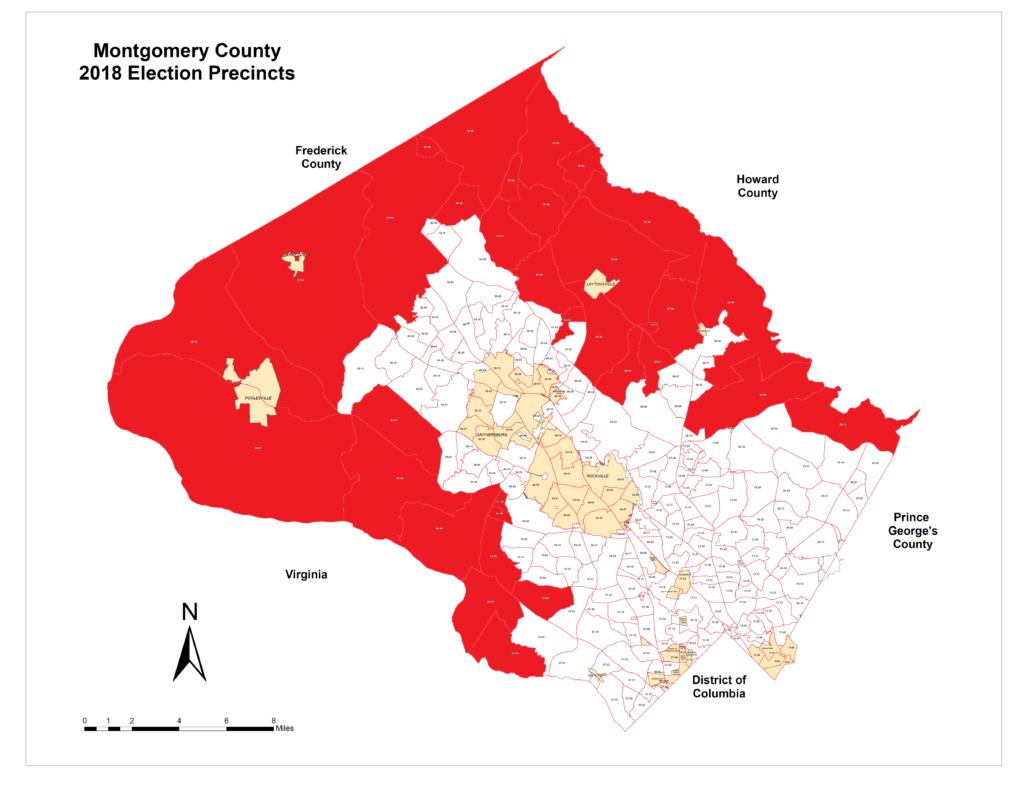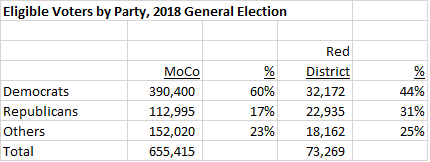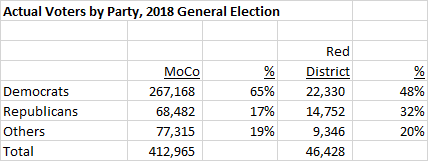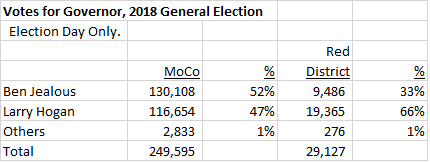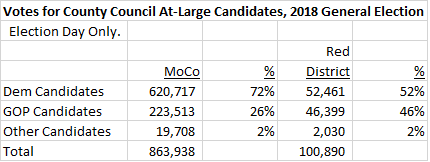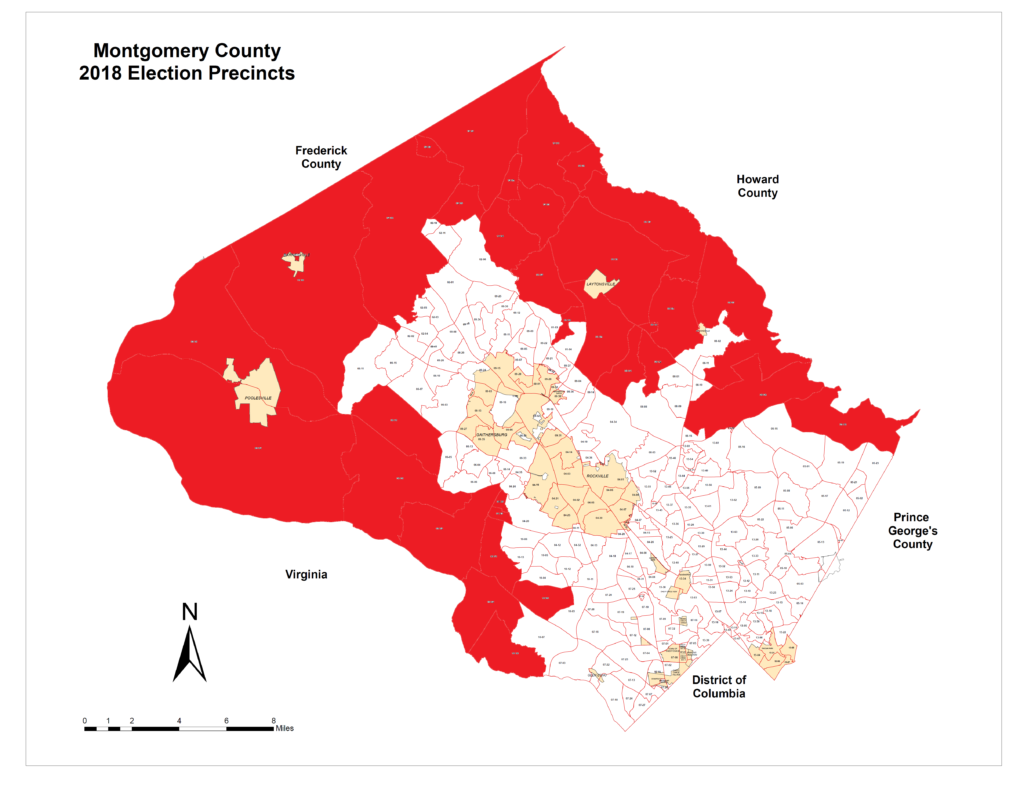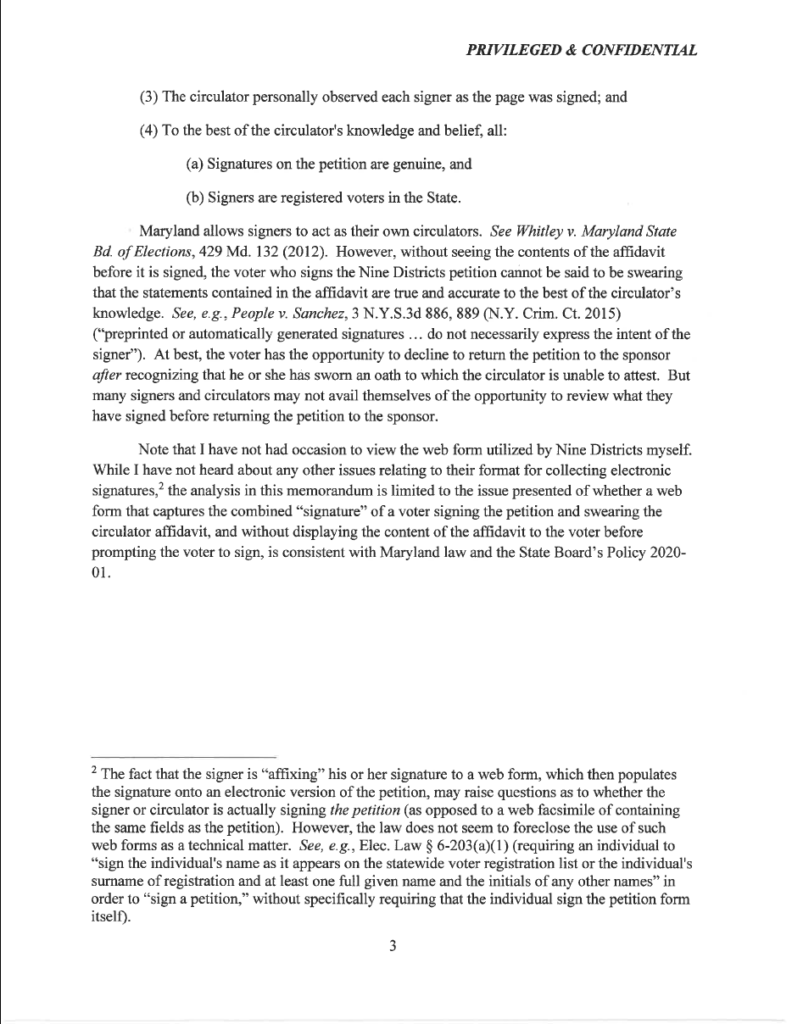By Adam Pagnucco.
In announcing the resignation of Chief Administrative Officer (CAO) Andrew Kleine, County Executive Marc Elrich also announced that budget director Rich Madaleno would be the next CAO. Madaleno, who served one term as delegate and three terms as state senator from District 18 before running for governor two years ago, is a well-known and well-liked figure in MoCo politics. (Disclosure: I was his slate treasurer from 2008 through 2012 and I did work for his gubernatorial campaign.) The replacement of Kleine by Madaleno provoked sighs of relief all over Rockville. But Rich is a 16-year elected official who as recently as two years ago had a handful of staffers and will now be managing a 10,000-person county government.
Is this going to work?
In terms of the skillset necessary to succeed as a politician, Rich Madaleno is one of the very best. He is brainy, unpretentiousness, funny and charming. He disagrees with folks on some issues and happily works with those very same people on other issues. He can balance between warring parties. For example, when he was a state legislator from District 18, he was the hero of anti-Purple Line activists in Chevy Chase while not making himself a target of pro-Purple Line activists in the eastern part of the district. He understands the viewpoints of other politicians and can work out deals. He explains complicated things in simple terms without coming across as condescending. He enjoys great respect in Annapolis and retains a loyal base in District 18. Rich adds to all of this a true facility with numbers that is unusual for anyone (especially a politician). Conversations with Rich can veer between stories of his kids, discussion of his beloved Washington Capitals and comparisons of county reserve policies all in five minutes.
Think about this, folks: super-progressive, LGBTQ Rich was able to build a constructive relationship with good old boy Senate President Mike Miller and get him to allow a vote on gay marriage – which passed over Miller’s no vote. That alone is one of the great political feats of our time.
But the CAO position is a wholly different thing from being an elected official. Consider the backgrounds of those who have held that position since it was created under the current charter in 1970.
William H. Hussmann, 1970-1978 (Under Jim Gleason) and 1990-1994 (Under Neal Potter): City of Rockville planning director for 7 years before his first CAO stint, construction company executive between his CAO tenures and planning board chair after his second CAO stint.
Robert W. Wilson, 1978-1983 (Under Charlie Gilchrist): Had been CAO in Prince George’s County and the county executive in Fairfax County (an appointed managerial position) before working in MoCo.
Lewis T. Roberts, 1983-1990 (Under Charlie Gilchrist and Sid Kramer): Deputy Director of Planning, Assistant CAO for 10 years.
Gene Lynch, 1994-1995 (Under Neal Potter and Doug Duncan): Construction company founder, chief assistant to county executive. He served in multiple positions in Governor Parris Glendening’s administration and was a planning board member after he left the CAO position.
Bruce Romer, 1995-2006 (Under Doug Duncan): City manager in Rockville.
Tim Firestine, 2006-2018 (Under Ike Leggett): Decades of experience in MoCo government, including 15 years as finance director.
Andrew Kleine, 2018-2020 (Under Marc Elrich): City of Baltimore budget director for 10 years.
These seven people share two things: years of experience as senior directors and/or managers before appointment as CAO and no experience as elected officials.
It’s important to understand exactly how complex the county government is. It provides public safety services like police, fire and rescue, 911 and corrections. It runs libraries and recreation centers. It provides social services. It builds and maintains transportation projects. It provides courts, consumer protection and protection from discrimination. It subsidizes housing. It permits development projects. It finances public schools, a community college and parks. It sets a minimum wage. It protects public health. In our case, it even sells liquor. Few if any private organizations engage in such a broad range of activities. The CAO is responsible for all of this on a day-to-day basis.
Now let’s understand exactly what the CAO job is. It’s not being a politician. It’s not being a political advisor, legislative strategist or deal maker. The CAO is the top manager in county government. If a problem happens in a department that exceeds the ability of the department director to deal with it, the CAO must go in and fix it. Some issues are technical. (What happens if an IT project fails and affects multiple functions of county government?) Some issues are ethics related. (What happens if a department director is accused of harassment or improper spending?) Some issues are budgetary. (What should be done about a department that relies too much on overtime and regularly exceeds its budget?) Some issues involve contracting. (Remember the Silver Spring Transit Center?) Some issues are structural. (What happens when multiple departments have competing authority over the same issue and disagree?) Politicians don’t deal with these issues directly. Politicians hire professional managers to deal with them and report back. That’s what the CAO is – the manager of managers.
Here is how Tim Firestine, Ike Leggett’s CAO, described the job.
Ike [Leggett] made it clear from the start that my responsibility would be to run day-to-day operations. We have 21 [department] directors who are appointed. They all reported directly to me. I have three assistant CAOs who help me manage the government. In my day-to-day, we would set up work programs and performance plans for each of the departments. At the end of the year, we would meet with them and go through their performance plans to hold [the department directors] accountable. And then we’d meet with the county executive, based on what they accomplished, to see whether it met what he was looking for.
My style [has been] to hire good people and let them run their departments — unless you’re a department where things aren’t going quite right, and then I’ll bring you in here on a regular basis, and we’ll keep working through it.
When asked about why he was able to last in county government, Firestine replied:
I’ve tried to stay out of the political aspects of it. I’ve never contributed to a campaign; I’ve never worked in a campaign for county executive. And I think being in the subject area I was in—because it’s complicated, it’s complex and people don’t know a lot about it—helps with longevity… The fact that I know a lot about the county finances, more than other people, that’s probably the advantage I’ve had. You combine that with working hard, and helping people get what they want to get as elected officials.
Bruce Romer, Doug Duncan’s CAO, said this to the Washington Post: “There’s no element of the limelight that I care to be involved in. We’re here to keep everything running… I don’t like talking about me.”
Stay out of politics. Stay away from the limelight. I don’t like talking about me. These are sentiments that are as alien to politicians as chastity is to brothel madams.
Can Rich do this job? Maybe, but going from having a handful of subordinates to managing thousands of people in two years is a heavy lift for anyone, even someone as smart as Rich. The big question my sources ask about Rich is whether he has completely shut the door on running for office again. If he has not, that’s going to make being a CAO really complicated. What happens when a tough managerial decision in the best interest of the county offends an influential endorsing organization? Such things never worried Firestine or Romer, who were never going to run for office. What happens if a county council full of people who might like to be executive someday comes to believe that the CAO will be an opponent in a future election? To them, every managerial decision will look like a political decision – and they can be counted on to act accordingly.
There is no room for two politicians in the executive branch. There can only be one.
Rich was probably the best short-term option Elrich had in replacing Kleine, whose ethics-related resignation was unprecedented for a MoCo CAO. There is no question that Rich is a well-intentioned and enormously gifted person with deep roots and lots of respect in the county. The question is whether a longtime politician’s skillset can be adapted to manage a 10,000-person government on a day-to-day basis. In fifty years of charter government, no prior MoCo administration has tried to do this before.
Will it work?








